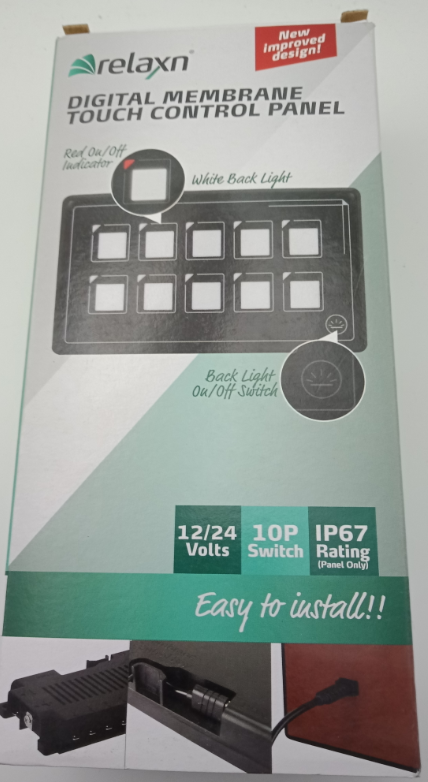Recognizing Membrane Layer Switches: The Key to Trustworthy and sturdy Controls
Membrane switches over represent a vital element of contemporary user interface layout, blending functionality with strength in different applications. As we discover the details of membrane layer switches, it comes to be clear that their duty in enhancing control systems is both intricate and extensive, elevating questions about exactly how ideal to leverage their abilities in future technologies.
What Are Membrane Switches?
Membrane switches are a sophisticated option in the world of user interface innovation, incorporating functionality and style flawlessly. These devices work as an interface between customers and electronic systems, integrating a number of components into a portable format. Commonly created from adaptable, thin layers of products, membrane switches are developed to reply to touch, enabling customers to communicate with machinery and digital devices properly.
The key elements of a membrane button consist of a printed circuit layer, visuals overlay, and a spacer layer that prevents unintentional activation. The visuals overlay can be tailored to reflect brand identity or individual choices, enhancing visual appeals while making sure use. Membrane layer buttons are typically used in different applications, consisting of medical gadgets, consumer electronics, and industrial devices, owing to their resilience and resistance to environmental variables such as moisture and dirt.
Among the key advantages of membrane layer buttons is their capacity to stand up to wear and tear, making them suitable for high-traffic environments. In addition, they are lightweight and need minimal space, allowing for ingenious layouts in product development. Overall, membrane layer switches represent a sensible and effective choice for contemporary digital user interfaces, weding innovation with user-centric layout principles.

Exactly How Membrane Layer Changes Work
The procedure of membrane switches joints on an easy yet effective system that translates user input right into electronic signals. When a customer presses the switch, the leading layer flaws, enabling a conductive element in the circuit layer to make call with an equivalent conductive pad on the bottom of the graphic overlay.
The style of membrane switches can vary, yet they often incorporate domes or responsive elements to offer comments to the user, boosting the overall experience. The products used in membrane switches, such as polyester or polycarbonate, add to their sturdiness and resistance to ecological factors, consisting of moisture and dirt. Additionally, the published circuits are commonly enveloped, which shields them from wear and tear gradually.

Advantages of Membrane Layer Buttons
Among the primary benefits of membrane switches is their flexibility in style, allowing them to be tailored to satisfy specific individual needs and visual requirements. This flexibility includes numerous industries, where various shapes, sizes, and colors can be used to improve user communication and aesthetic appeal.
Additionally, membrane layer switches are known for their longevity. Built from robust materials, you could check here they are immune to dust, dampness, and physical wear, which considerably extends their lifespan contrasted to standard mechanical buttons. This toughness makes them specifically ideal for high-traffic settings and applications requiring long life.

Additionally, membrane switches supply a structured account, causing a thinner design that can be integrated right into different devices without adding mass. This attribute not only enhances the visual charm but also adds to an extra ergonomic product design.

Applications of Membrane Buttons
Easy to use and functional, membrane switches locate applications across a vast array of sectors, including medical tools, customer electronics, and industrial Web Site devices. In the clinical area, these switches are essential to gadgets such as analysis devices, person monitoring systems, and infusion pumps, where dependability and simplicity of cleansing are critical. Their ability to maintain and endure severe environments performance makes them ideal for such applications.
In customer electronic devices, membrane buttons are utilized in products like microwaves, cleaning equipments, and remote controls - membrane switch. Their sleek design allows for intuitive interface, improving the overall user experience while providing resilience and resistance to tear and use
Industrial devices likewise gains from membrane buttons, specifically in control panels for equipment and automation systems. These buttons use security against dirt and dampness, guaranteeing consistent efficiency in challenging environments. In addition, their personalized attributes permit suppliers to customize them to details functional requirements, improving efficiency and capability.
Selecting the Right Membrane Layer Change
When picking a membrane button, it is necessary to consider numerous factors that affect efficiency and suitability for details applications. The primary factors to consider include ecological conditions, tactile responses, toughness, and layout specs.
First, analyze the operating atmosphere; buttons revealed to wetness, chemicals, or severe temperature levels require certain products to guarantee durability and capability. Next, examine the demand for tactile responses. Depending on individual communication, some applications may benefit from a tactile action to confirm activation, while others may choose a non-tactile layout for visual reasons.
Longevity is another important factor; membrane buttons need to be developed to stand up to constant usage, impacts, and abrasion. Guarantee the chosen button can sustain the anticipated lifecycle, specifically in high-usage scenarios.
Conclusion
In conclusion, membrane switches over offer as essential parts in the layout of long lasting and trustworthy control systems throughout different industries. The adaptability of membrane switches over enables for tailored options that meet details go to this website operational needs, strengthening their relevance in modern innovation.
Membrane switches stand for an essential element of modern user interface layout, blending capability with resilience in numerous applications.Membrane buttons are a sophisticated option in the realm of individual interface modern technology, integrating functionality and style perfectly. Typically built from adaptable, thin layers of products, membrane switches are designed to react to touch, making it possible for users to connect with machinery and digital gadgets effectively.
The layout of membrane layer switches can differ, however they typically incorporate domes or responsive aspects to offer feedback to the customer, enhancing the general experience.In verdict, membrane switches serve as crucial components in the design of long lasting and dependable control systems across different markets.